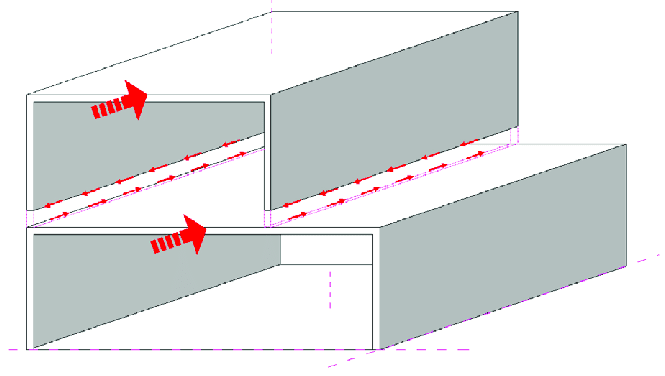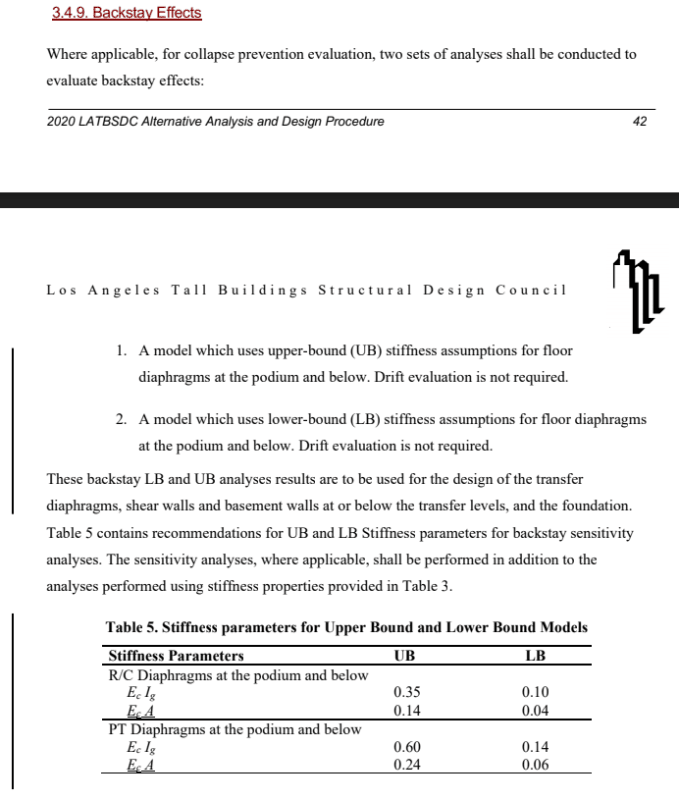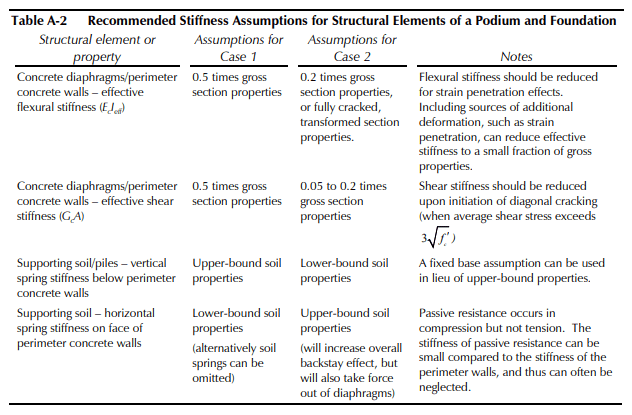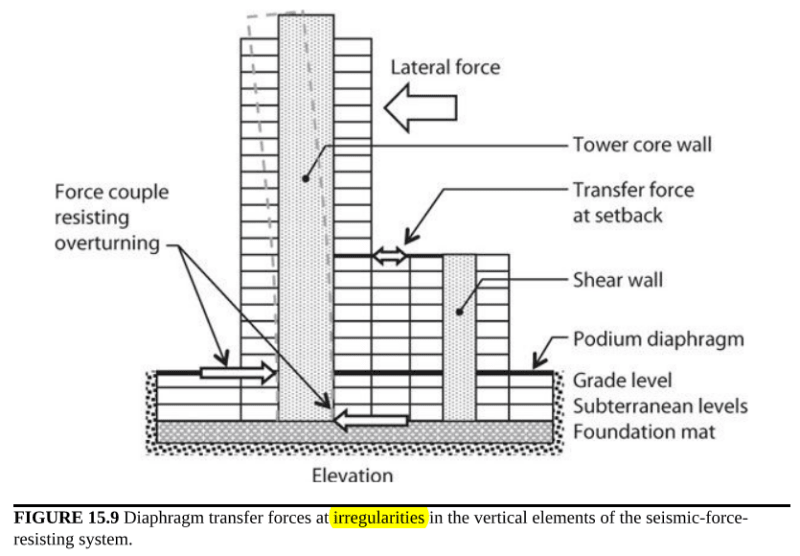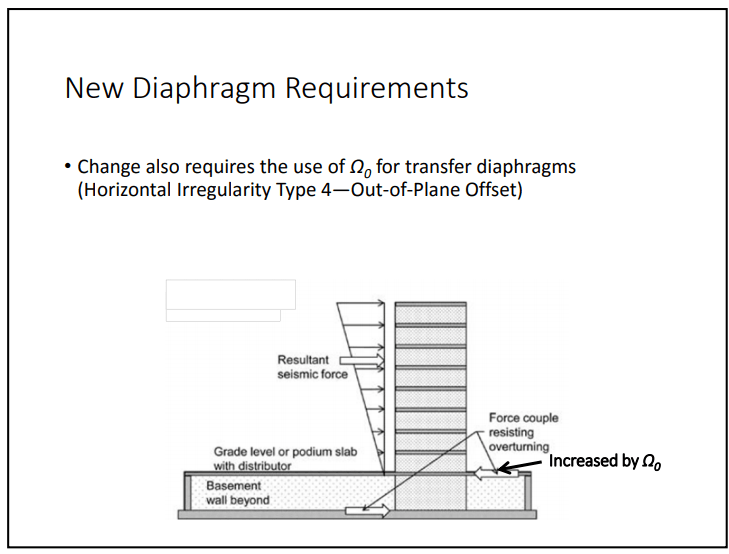Hello everyone,
I'm designing the lateral system for a building in a high seismic area. 8 levels above grade and 2 levels of parking below. The main SFRS includes two concrete shear cores extending from the foundation to the roof. At the main floor at grade level, a lot of the seismic shear force wants to transfer through the P/T slab out to the perimeter basement walls. I am designing the connections between the walls and slab for overstrength forces into the diaphragm through direct shear transfer and collectors.
My question: is this considered a Type 4 irregularity given that there is a lot of transfer? Again, the core walls are continuous through the garage. If it is considered a Type 4 irregularity the transfer slab itself would need to be designed for the overstrength transfer loads as well, instead of just the collectors and connections from slab to wall.
For reference, here is the ASCE 7 definition of the irregularity:
"Out-of-Plane Offset Irregularity: Out-of-plane offset irregularity is defined to exist where there is a discontinuity in a lateral force-resistance path, such as an out-of-plane offset of at least one of the vertical elements."
Thanks!
I'm designing the lateral system for a building in a high seismic area. 8 levels above grade and 2 levels of parking below. The main SFRS includes two concrete shear cores extending from the foundation to the roof. At the main floor at grade level, a lot of the seismic shear force wants to transfer through the P/T slab out to the perimeter basement walls. I am designing the connections between the walls and slab for overstrength forces into the diaphragm through direct shear transfer and collectors.
My question: is this considered a Type 4 irregularity given that there is a lot of transfer? Again, the core walls are continuous through the garage. If it is considered a Type 4 irregularity the transfer slab itself would need to be designed for the overstrength transfer loads as well, instead of just the collectors and connections from slab to wall.
For reference, here is the ASCE 7 definition of the irregularity:
"Out-of-Plane Offset Irregularity: Out-of-plane offset irregularity is defined to exist where there is a discontinuity in a lateral force-resistance path, such as an out-of-plane offset of at least one of the vertical elements."
Thanks!

